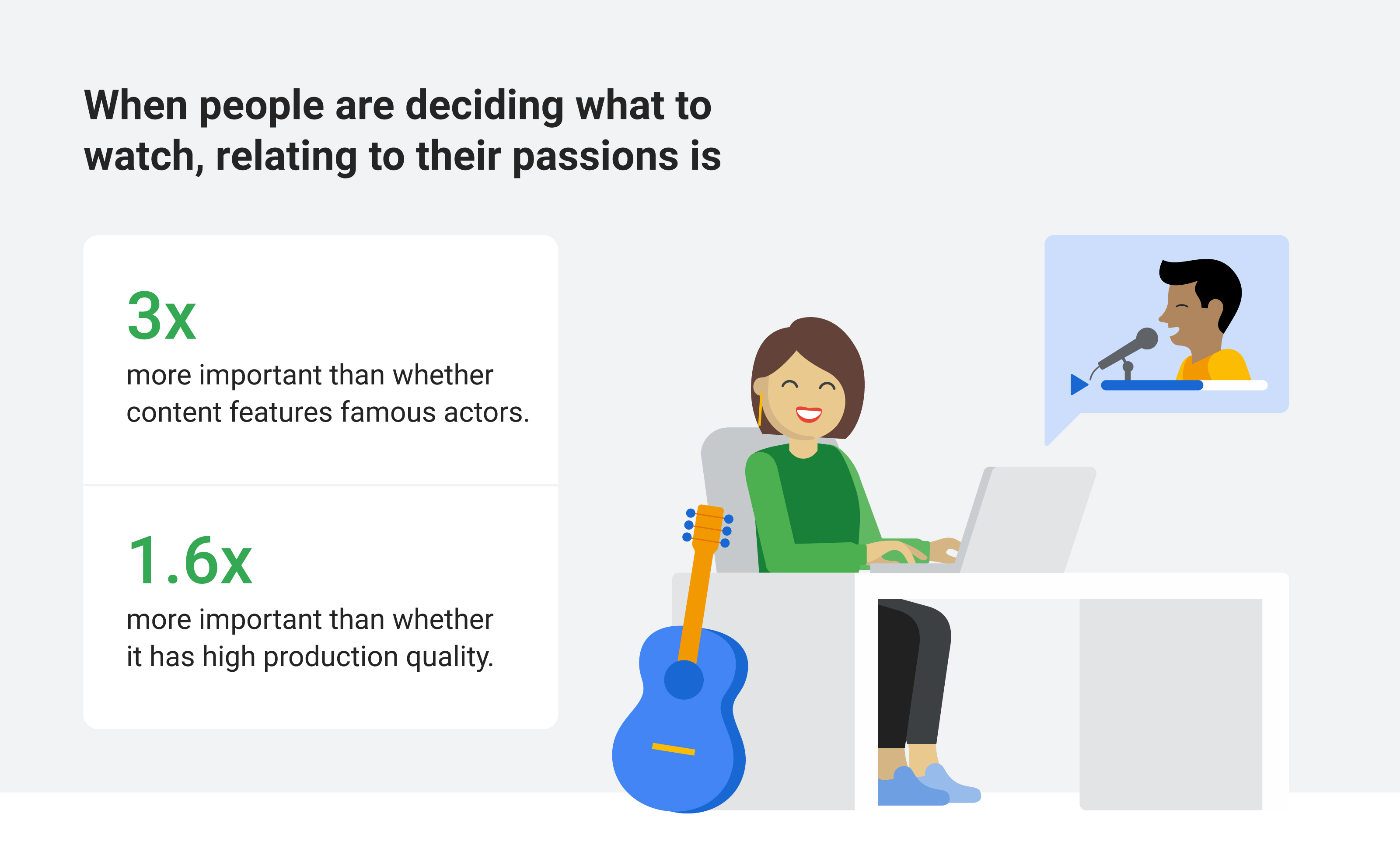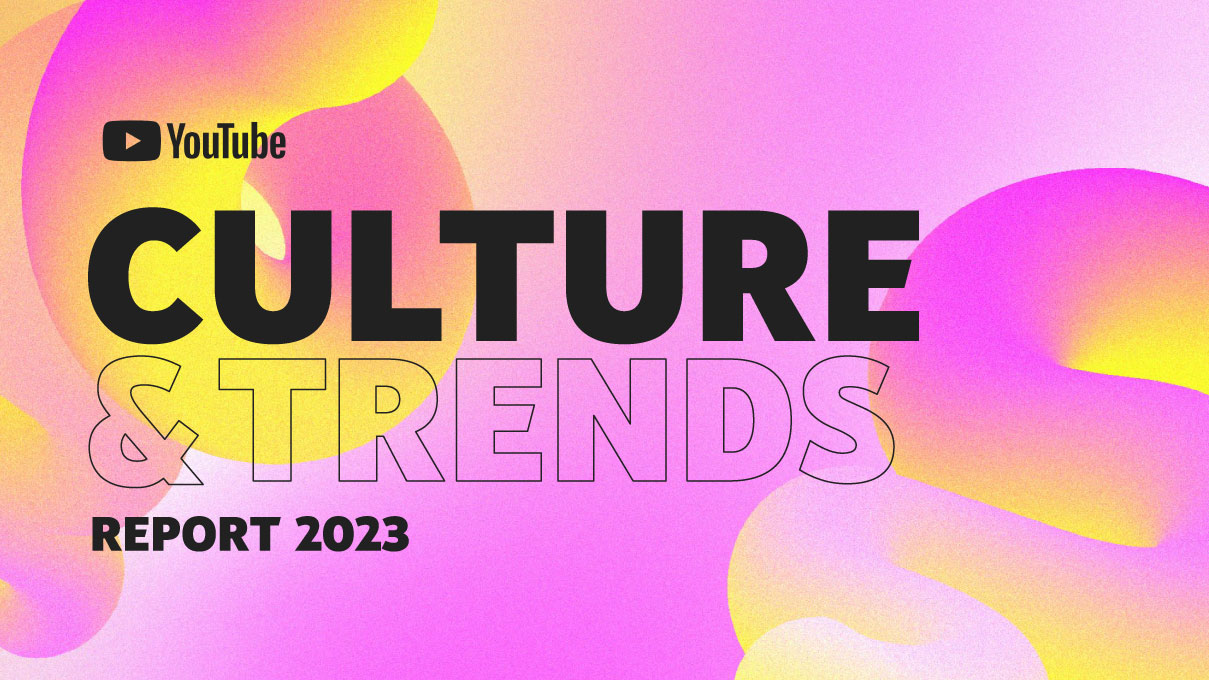In a world where viewers have total control and an ever-growing array of content to choose from, traditional primetime has been replaced by personal primetimes – moments of engagement that are completely driven by the viewer and their passions, rather than by what may make for the best Thursday night lineup. In a recent survey we conducted with Omnicom Media Group, for example, over 60% of respondents who’d watched something on YouTube in the previous 24 hours said that it was related to something they were passionate about.1
As personal relevance and viewer passion take centre stage, marketers need to rethink their approach to video. Inspired by brands that are already embracing this, here are five lessons to apply to your own video strategy.
1. Capture attention immediately
You might have heard that attention spans are shrinking, but the research behind that viral claim has been well and truly debunked. Here’s what has changed, though: with more content choices available than in the past, people are getting increasingly selective about where they focus their attention. If something doesn’t grab them right away, they’re ready and able to skip, scroll or fast-forward.
In this new era of personal primetimes, then, the job of the marketer is to grab people’s attention from the jump – like Converse did in one of the top-performing YouTube ads of 2018.
The first frame features “Stranger Things” star Millie Bobby Brown asking a simple question: “I mean, who do you think Chuck Taylor is?” The setup – which also features the sole of the iconic Converse shoe reflected in a mirror – was enough to intrigue viewers and keep them watching by the millions.
With content that surprises and intrigues early on, brands have the opportunity to plunge viewers straight into the story, getting them to stop and engage instead of skipping.
2. Be truly helpful
Viewers turn to online video to get a huge variety of needs met in the moment – everything from learning how to hang a picture frame to speaking another language. Increasingly, they’re also heading to platforms like YouTube for shopping inspiration. For example, watch time for YouTube videos on “which product to buy” doubled between 2017 and 2018.2

To stand out in a sea of ads, brands might want to consider creating helpful content that meets these new consumer needs. For example, through a video series, Ikea has been tackling one of the biggest challenges in home décor: knowing how to combine furniture in a way that works. Ikea sent a squad of store staff on a home makeover tour, leaving them to shoot and produce their own video series along the way. The Ikea Home Tour series now features over 100 episodes, has racked up tens of millions of views and offers the kind of content that YouTube viewers love: focused inspiration and advice for common situations, perfectly tying Ikea to the idea of affordable and beautiful home improvement.
If you can teach and inspire audiences, they won’t just watch – they’ll become loyal, long-term advocates of your brand.
3. Relate, relate, relate
Understanding your audience is table stakes. But new research shows that being relevant to people’s personal interests is perhaps the most important thing that your content and ads can be. When people are deciding what to watch, relating to their passions is 3X more important than whether content features famous actors and 1.6X more important than whether it has high production quality.3

The US Navy is a great example of the power of relevance. Initially, the marketing team had assumed that people interested in joining the Navy would probably also be interested in things like military missions and hardware. But Google and YouTube data revealed that they were actually passionate about things like cooking, martial arts, bodybuilding and rock climbing. Based on this insight, the team created multiple YouTube ads tailored to these interests so that prospects saw diverse, relevant opportunities. People who saw the ads two or more times were 16% more likely to consider joining the US Navy, and users who saw the ads at least twice were 19% more likely to search for US Navy keywords on YouTube within three days.
When you can frame your brand in the context of things people care about, it drives results.
4. Lean into YouTube creators
Video is a unique and immersive way for influencers to build relationships with people. On YouTube, creators can break the fourth wall, listen and have a two-way dialogue with their fans and build relationships based on their personalities. More viewers than ever are becoming loyal fans: the number of YouTube users who follow creators and engage with their channels every day grew by a massive 70% between 2017 and 2018.4

When Clorox brand Brita paired up NBA superstar Steph Curry with YouTube creator KingBach, they had one mantra: “Let creators work.” The brand let the duo create their own video explaining the benefits of the Brita Stream water filter to a young audience. The result? A hilarious, catchy and surprisingly heartwarming video that generated over two million views and led to a 2,000% lift in mobile searches.
Collaborating with creators is a high-impact way to reach engaged audiences, but you can also reach customers through the creators that they love by serving ads alongside the relevant channel.
5. Encourage action
In their moments of personal primetime, viewers are ready to take action. Not only are they in lean-forward mode – which means that they’re 1.5X more likely to pay attention than when in lean-back mode5 – but viewers are also turning to YouTube to get things done. Over half of shoppers say that online video has helped them decide which specific brand or product to buy.6
Strong creative that has an enticing call to action and makes it easy to take the next step, like visiting a website or making a purchase, allows you to both build your brand and drive business results with video. Take Yoox Net-A-Porter, which created a series of 25-second video ads offering products that its audience couldn’t get elsewhere. To drive urgency, the brand used a creative hook: If the viewer didn’t click on the deal, it was gone forever. The campaign drove a view-through rate over 20% higher than the category average and led to significant sales for the business during the holiday season.





